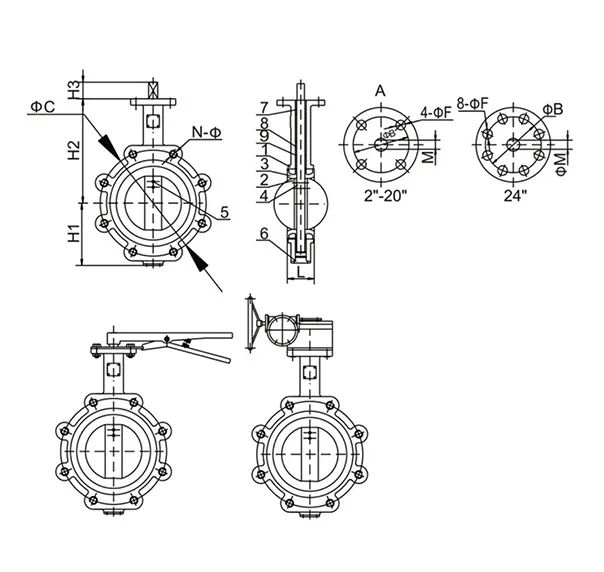Nov . 19, 2024 05:09 Back to list
Understanding the Functionality of Non-Return Swing Check Valves in Fluid Systems
Understanding Non-Return Swing Check Valves
Non-return swing check valves, often simply referred to as swing check valves, are crucial components in various piping systems. Their primary function is to ensure one-way flow of fluids, effectively preventing backflow that can cause system damage or inefficiency. This article explores the design, applications, benefits, and maintenance of swing check valves.
Design and Mechanism
The non-return swing check valve operates on a simple principle it utilizes a hinged disc or flap that swings open and closed in response to the flow of fluid. When the fluid flows in the intended direction, the pressure lifts the flap, allowing the fluid to pass through. Conversely, if the fluid attempts to flow back, the flap swings back against its seat, creating a seal that prevents reverse flow.
These valves can be made from various materials, including metals like brass, stainless steel, and cast iron, or plastics, depending on the application requirements. The choice of material affects the valve's durability, pressure tolerance, and compatibility with different fluids.
Applications
Swing check valves are widely used in various industries, including water treatment, oil and gas, chemical processing, and HVAC systems. They are particularly suitable for applications where the fluid flow is consistent, such as in open systems and gravity-fed applications, where the pressure differentials are sufficient to lift the swing flap.
non return swing check valve

In water treatment plants, for example, swing check valves prevent backflow that can contaminate clean water supplies
. In the oil and gas industry, they are essential in pipelines to maintain the integrity of the system, allowing for smoother operations and reduced risk of spills.Benefits
One of the major advantages of non-return swing check valves is their simple design and low maintenance requirements. They are generally less prone to clogging compared to other check valves, such as ball or diaphragm check valves. Additionally, swing check valves can handle larger volumes of fluid due to their larger opening size, making them efficient in high-flow situations.
Moreover, their ability to operate effectively at high flow rates and low-pressure drops makes them a preferred choice in many applications. The reliability and cost-effectiveness of swing check valves further enhance their appeal to engineers and facility managers.
Maintenance and Considerations
While swing check valves are relatively low maintenance, periodic inspections are necessary to ensure proper operation. Engineers should check for signs of wear on the disc and sealing surfaces, as well as ensure that the valve moves freely without obstruction. Proper installation is also critical; the valve should be installed in a horizontal position to function optimally.
In conclusion, non-return swing check valves are essential in maintaining the integrity and efficiency of fluid systems. Their reliability, straightforward design, and wide range of applications make them an indispensable component in modern engineering solutions.
Share
-
Reliable Wafer Type Butterfly Valves for Every IndustryNewsJul.25,2025
-
Reliable Flow Control Begins with the Right Ball Check ValveNewsJul.25,2025
-
Precision Flow Control Starts with Quality ValvesNewsJul.25,2025
-
Industrial Flow Control ReliabilityNewsJul.25,2025
-
Engineered for Efficiency Gate Valves That Power Industrial PerformanceNewsJul.25,2025
-
Empowering Infrastructure Through Quality ManufacturingNewsJul.25,2025